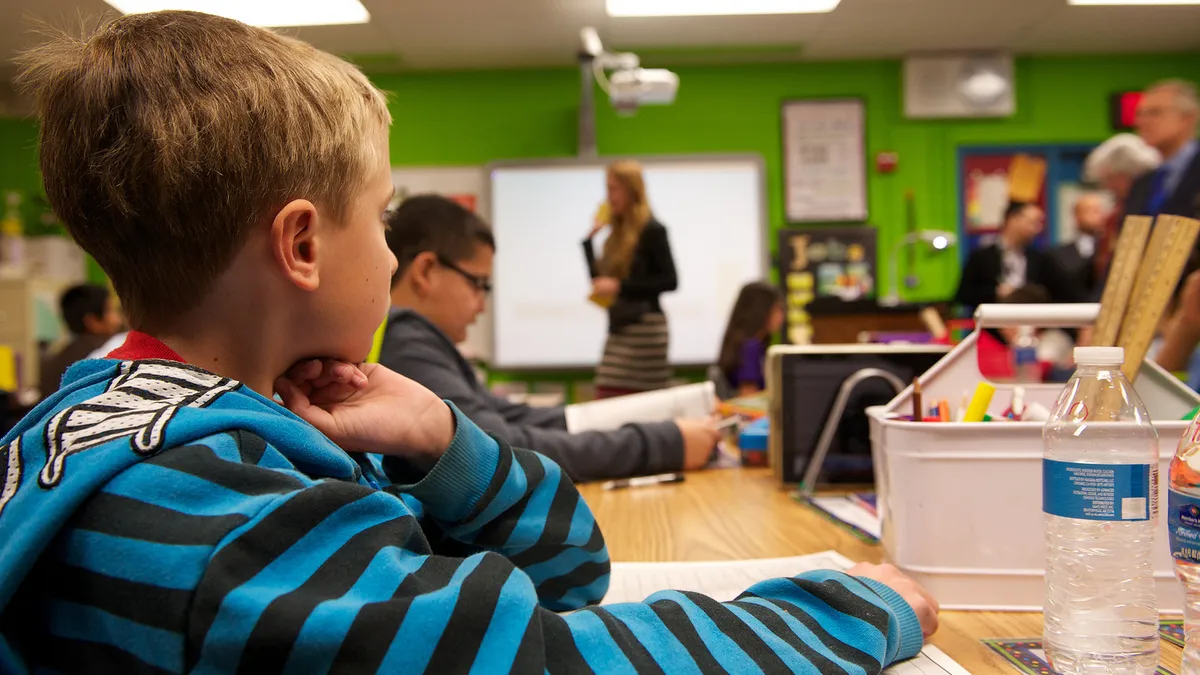Dive Brief:
- Only 17% of general education teachers feel “very well prepared” to teach children with mild to moderate learning disabilities, and only 30% “feel strongly” about their preparedness to teach them, according to a recent report released by Understood and the National Center for Learning Disabilities. More than 60% feel they are “somewhat prepared” to teach them, however, The 74 reports.
- Across the nation, about one in five public school students has learning or attention issues, but not all of them receive special education services, the report noted. The issue is of importance because most students with such learning disabilities spend most of their time in the traditional classroom and most perform below grade level, in part because roughly half of teachers surveyed “feel strongly” that it is possible for these students to perform at grade level.
- Most teachers want to be better prepared, but only seven states currently require future general education teachers to take coursework focusing on students with disabilities, and much of this instruction does not prepare them for the realities of the classroom. Many teachers also have misconceptions about the source of learning disabilities and low expectations for student success. They require more professional development to help them work with these students with better understanding, the article says.
Dive Insight:
Teachers are routinely required to teach students with a wide variety of needs and abilities in a single classroom.. While integrated classrooms and fuller inclusion of students with disabilities in the general education classroom is possible and often beneficial, especially to students with special needs, it is not an effective approach without proper training, support, and technology to help personalize the learning environment.
If general education teachers are to be expected to teach students with learning disabilities in their classrooms, then it is also reasonable to expect that they be required to have training in this area. The training also needs to be realistic. Teaching someone how to work one-on-one with a special-needs student is a far cry from dealing with 25 students with varying needs. While some of this training may be provided in teacher preparation programs, it is often not required. Professional development can help fill this gap.
Teachers also need to have the right growth mindset when working with all students and with students with learning disabilities especially. Many students with learning disabilities simply learn differently or at a different pace than their peers, but they are often capable of accomplishing more than their teachers realize. In fact, their unique perspectives can add value to collaborative learning situations. By encouraging a growth mindset in teachers, students are more likely to develop that growth mindset as well and take more control of their own learning and become better prepared for the future.
However, general education teachers cannot help students reach their full potential without the help of special education teachers. In some schools, special education teachers are not available either because of funding issues or because they are becoming increasingly hard to find. Administrators can advocate for funding for these positions, and in some cases, this may mean encouraging general education teachers who are adept at working with students with special needs to go back and get the credentials they need to serve in that role. When special education teachers are in place, administrators also need to encourage a spirit of collaboration between special and general education teachers, perhaps even considering a cooperative teaching arrangement between the two.












